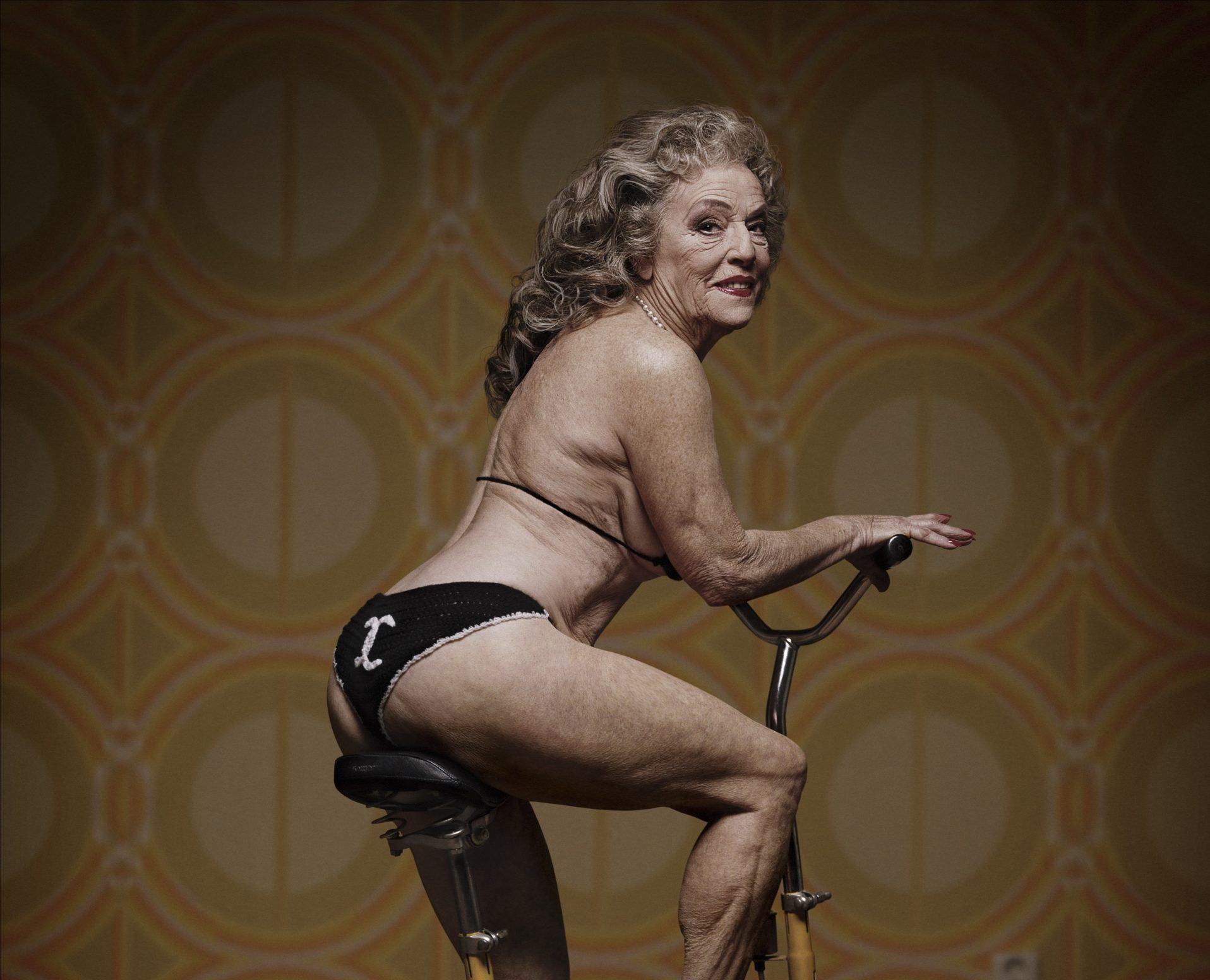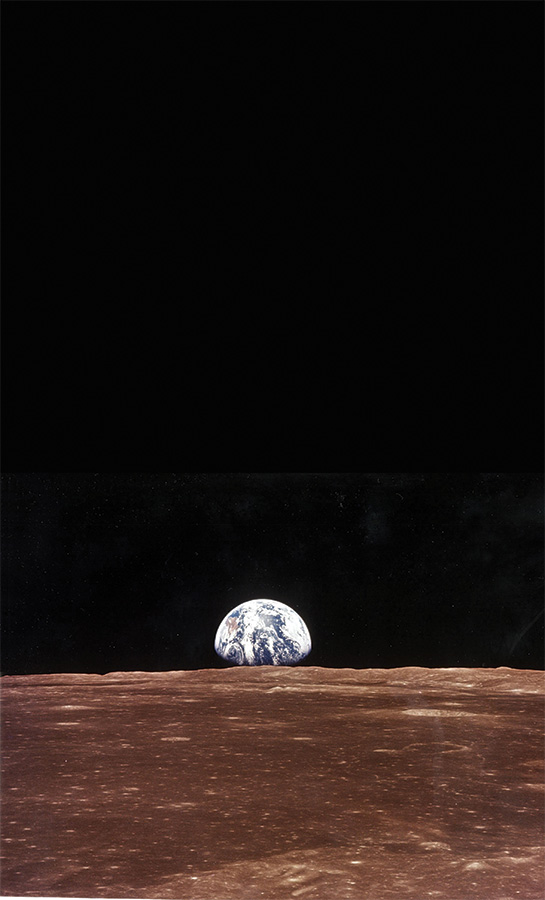
The urge to be a pioneer has been with us much longer than the troll declaring themselves “first” in the Internet era. When the astronauts onboard the Gemini and Apollo missions snapped images of themselves with a camera at arm’s length, walked on the moon, played lunar golf and paused to check the time on their wristwatches, they became exclusive members of a select club.
In 1969, two of the astronauts on the Apollo 11 mission registered the ultimate in firsts when they set foot on the moon. One was Neil Armstrong, the other was Buzz Aldrin and both became global heroes on a scale that is unsurpassed to this day.
One of the images taken on that mission is a photograph of an astronaut, standing on the surface of our natural satellite. On the dark strap around his right wrist is an Omega Speedmaster. It was the first watch worn on the moon. It was worn by Aldrin.
The United States’ National Aeronautics and Space Administration recognised the need for a timepiece its astronauts could wear on space missions early on in its space programme. NASA engineer James Ragan set out to find a suitable watch and asked a group of watchmakers to submit candidates. Just four did and Omega was among them. After months of rigorous testing, NASA decided only the Speedmaster was suitable, declaring the watch “operational for space exploration and flight certified”.

The Speedmaster has been around since 1957 and as part of the 60th anniversary of the watch, #legend spoke with Aldrin.
He is a serial high-flyer. He progressed from pole-vaulting to flying jet fighters in the Korean War to walking on the moon. In between, he became a military instructor and wrote a doctorate on rocket science.
Now aged 87, he sports three watches, a star-spangled tie with matching socks and copious amounts of jewellery. In the company of his manager, Christina Korp, he talked about some of his favourite images from the missions to space and his passions, past, present and future.
Aldrin: I’m still talking about things from 48 years ago, for people who don’t remember. There have been a lot of things go on in between but most of them have been preparing for adventure and exploration into the future. That’s my life. I’ve served my country since I swore an oath at the Montclair Academy when I was 17 years old and I continue to serve. I’m proud to have been a part of the Apollo programme.
Korp: We’re going to touch on some iconic photos.
Aldrin: On my first mission in space, November 1966. We were taking pictures of the star systems and I looked at the camera and I said, “Why don’t I just take a picture of myself?”. It turned out to be the first selfie in space, in 1966.
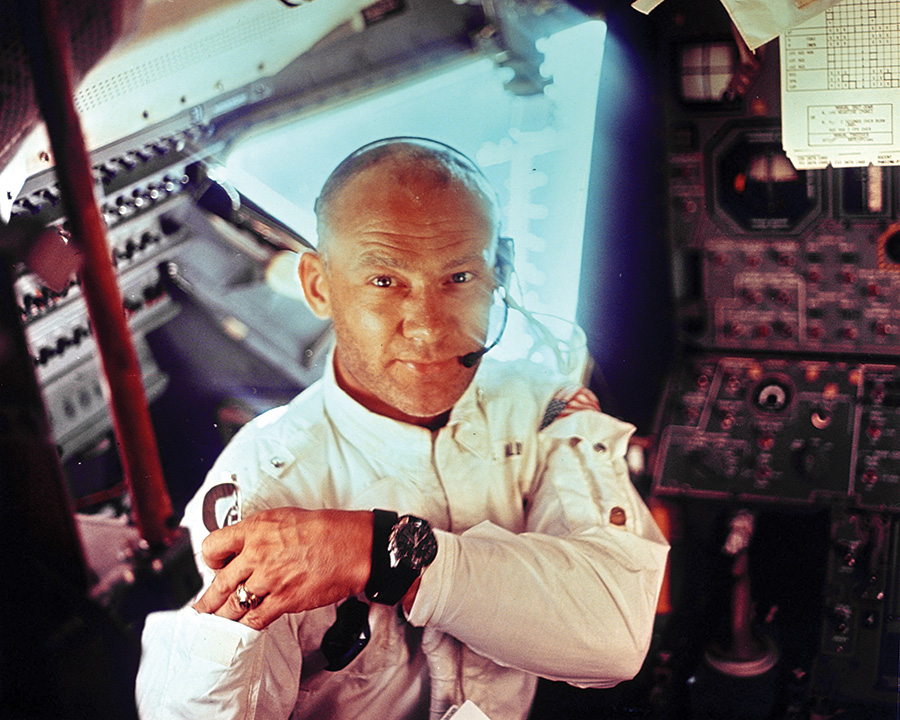
Aldrin: I had been waiting for quite a while to get to the South Pole. I’d gone to the North Pole as part of a team on a Russian nuclear icebreaker, which makes a lot of noise. I’d been down to the Titanic, quite a few miles down. It takes an hour and a half just to sink down in the French yellow submarine that we were in. When I finally got to the South Pole last year, believe it or not, all the winter gear made it much harder to manoeuvre around than in a spacesuit. We went in this ancient airplane that didn’t really have any pressure in it and you may not realise it, but the South Pole is at 2,740 metres above sea level. Here I am, walking with this heavy stuff on, a little bit of snow that you have to trudge through. And I get out of breath when I have to walk from one gate to another at an airport.
Korp: But you were singing. You were singing, 99 Bottles of Beer.
Aldrin: Maybe when I started out but, in the end, I started to get out of breath. Of course, it became a little overblown in terms of the difficulties. They evacuated me because I was a little out of breath. But we guys, we don’t do things because they’re easy, we do them because they’re hard.
Korp: You’ve got three Omega watches on, including the one you wore to the South Pole.
Aldrin: Yes. This is the glitzy one, an automatic, made of gold, chronometer. And this is the Space Station watch, with a lot of different time zones in it. It’s quite complex. And this is the Speedmaster, for the 60th anniversary. This one I’m going to make some modifications to, to make it a Mars watch. So here on Earth, you’ll be able to tell what time it is on Mars.
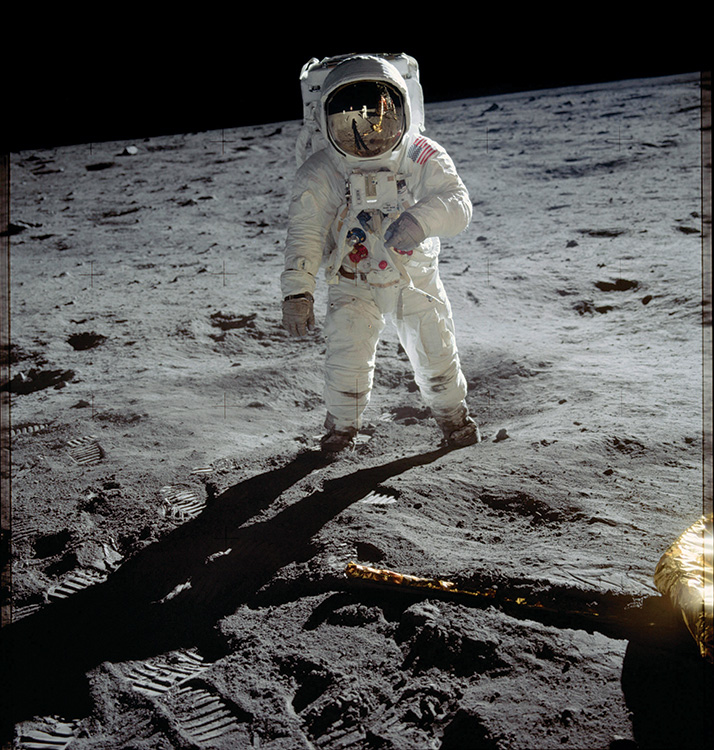
Korp: You could talk about Mars for hours.
Aldrin: Special orbits going to Mars and cycling orbits that are continuous; I discovered these going back and forth to the moon. I use the same sequence, gravity assist, for trips to Mars. Six months to Mars and it brings people back about a year and a half or two years later. Six months back, then it takes people there again.
Korp: If you have an HTC Vive, you can see Buzz’s virtual reality experience called Cycling Pathways to Mars, which is a visualisation of his plans for the future of the moon and Mars. It’s not quite as technical as Buzz would explain it. It’s more of a visualisation. It also has a 3D visualisation of where Buzz landed on the moon.
#legend: Science and optimism took you to the moon. We seem to be in a more pessimistic time and the value of science doesn’t seem to be appreciated. What does that mean in getting to Mars?
Aldrin: Well, science has been driving so much of what we’ve been doing. We’ve been sending rovers to Mars, the Curiosity, two rovers went there 12 years ago. One of them is still working. It takes 20 minutes for the pictures they take on Mars to come back but when we’re simulating things where we can control activities on Mars from Earth, it has to be a specific, regular routine, like refuelling. We need to practise that on Earth, then do it on the moon, where we will get international partners to join us in the future, in the 2020s. Then, in the 2030s, we send people to Mars.
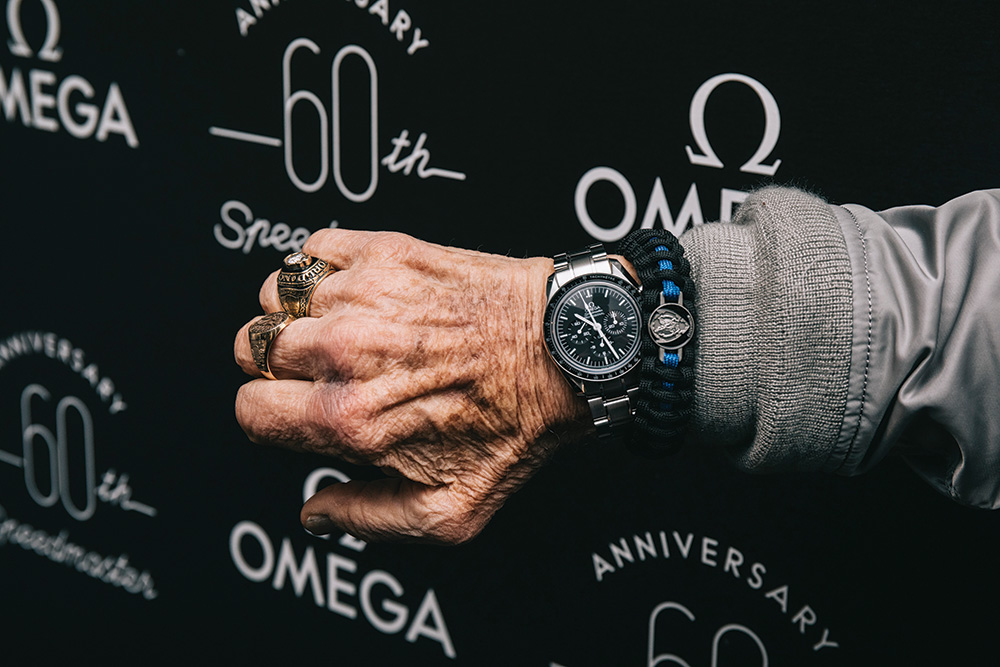
#legend: What was the role of the Speedmaster in the moon missions?
Aldrin: It was a little difficult to activate the stopwatch to time things but we didn’t need to do that, really. We were in communication with Earth all the time. We felt at home because we could talk to each other. But we wore the watches and we kept them set to the time of the shifts of the people back in Mission Control. They were on an eight-hour shift. There we were on the moon, going around, but we knew what time it was in Houston, Texas all the time.
#legend: Is there anything else in space exploration that you’d like to see happen in your lifetime?
Aldrin: I just grew up and hoped that I’d get to play football. I ended up pole vaulting, then flying combat during the Korean War. Then I got into the space programme and became a Doctor of Science, discovered better ways of doing rendezvous in space. Then, after I left NASA, I turned that into cycling orbits: Earth and the moon, then to Mars. The plan I’m developing now is a complete plan and I hope it gets developed when I’m not here anymore. My mother was born the year the Wright brothers first flew. My father was a pilot in the Second World War. I was in the Korean War and got to go to the moon. Now I’m planning for humans to go to Mars. What better time to be here on the surface of the Earth than during the fortunate life I’ve had?
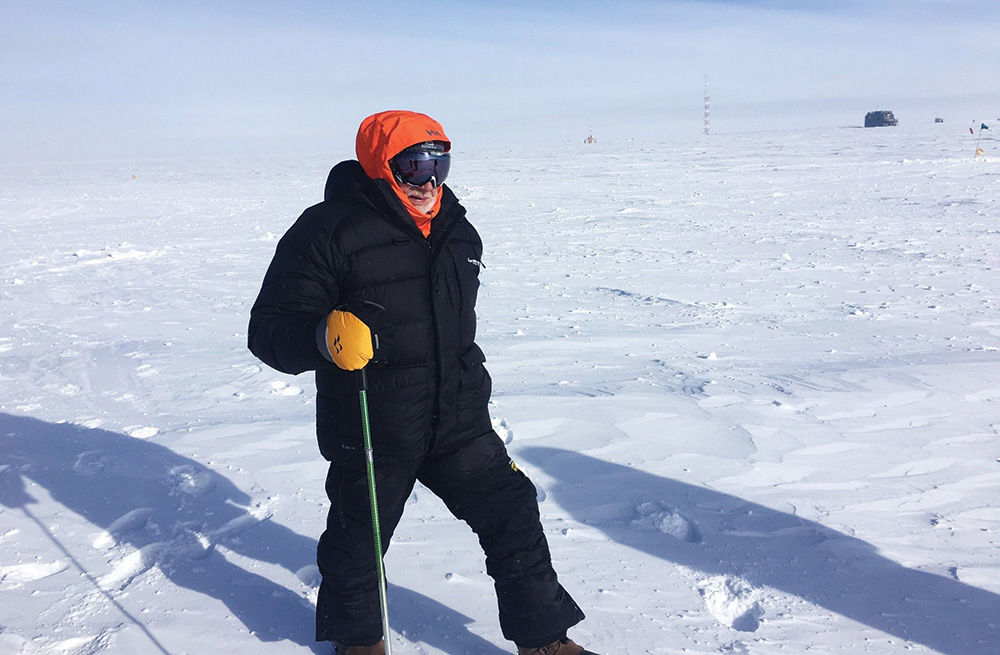
This article first appeared in the June 2017 issue of #legend magazine



